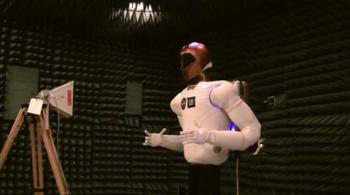Currently, the focus is on the state–of-the-art NASA robot, Robonaut R2, whose upper body is orbiting around the Earth in the International Space Station.
Its lower body is being designed and built at the Johnson Space Center in Houston by the IHMC engineers and the scientists, along with the National Aeronautics and Space Administration and this would permit R2 to walk just like a human being unassisted and upright on two legs.
 R2 robot
R2 robot
The legs would work due to algorithms or computer software code which had been written by scientists at the IHMC in Pensacola. Ken Ford, the Director of IHMC states that this robot would be the coolest robot in the world. According to Rob Ambrose, the Chief of the software, robotics and simulation division at the Johnson Space Center, both NASA and the Pensacola Institute were a great team ideal for building R2 and that IHMC had some prominent experts in the field of walking robots. Peter Neuhaus, an IHMC scientist who is the project leader along with Jerry Pratt, another scientist at the Institute states that R2 would be a robot which could walk, be bumped and not fall over, with an ability to do complex tasks without human supervision.
The Florida Institute for Human and Machine Cognition (IHMC) has its main facility in Pensacola with 70 employees and one more facility in Ocala with 17 employees and is affiliated with many Florida Universities and is a non profit research institute. Its researchers develop technologies which help to extend human capabilities with the help of software and computers, cockpit displays, robots and other technologies. Several computer scientists, neuroscientists, cognitive psychologists, philosophers, social scientists, physicians and engineers are a part of the IHMC staff. The scientists and engineers in IHMC work along with the government and the industry for the development of science and technology in areas such as national defense and space exploration. The Institute receives funds from both private and government sources and works in partnership with the Air Force, Navy, Army, NASA, the National Science Foundation, the Defense Advanced Research Projects Agency, IBM, Nokia, Sun Microsystems, Microsoft, Lockheed Martin, Boeing and the National wInstitutes of Health.